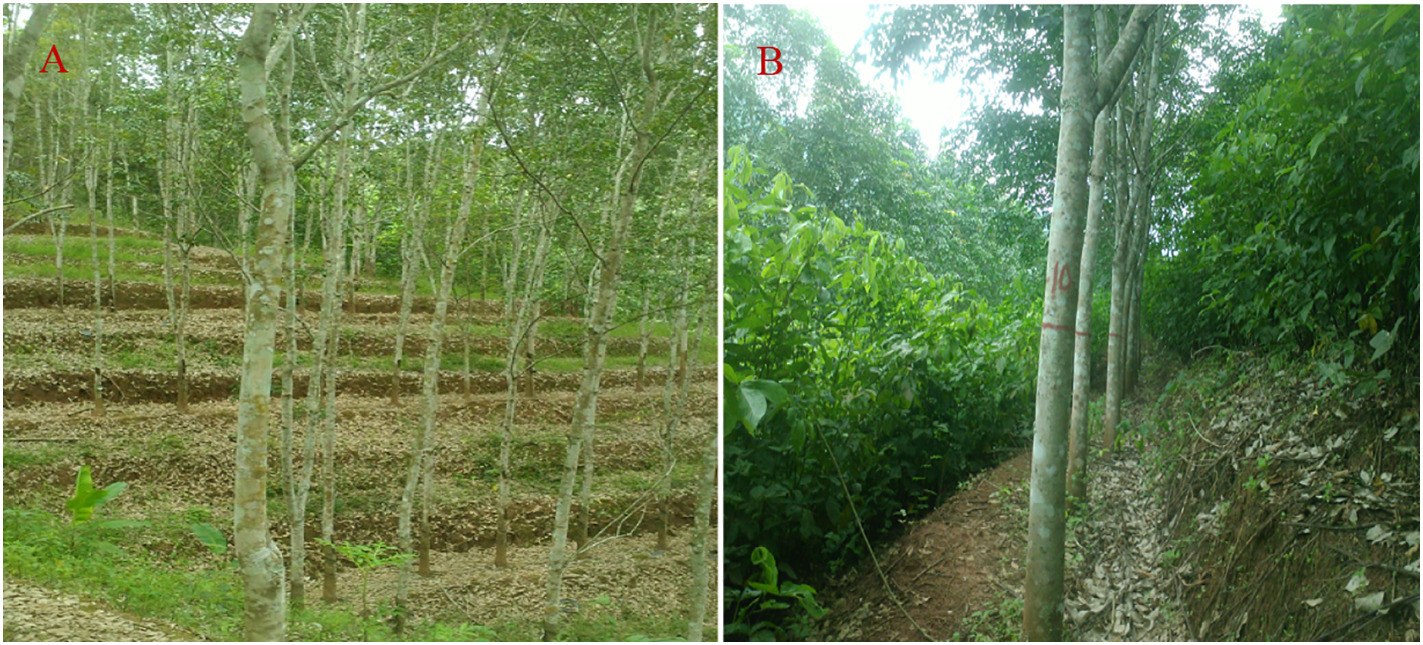Flemingia macrophylla is a perennial leguminous leafy shrub that can biologically fix nitrogen. Rubber–Flemingia macrophylla systems have become popular in Xishuangbanna, Southwest China. The introduction of Flemingia macrophylla to rubber plantations may decrease soil exchangeable cations (Ca2+, Mg2+, K+, and Na+ ) , important indicators of soil buffering and storage capacities.
The degree of soil acidification in differently aged rubber plantations may differ, and the response of soil exchangeable cations to the introduction of Flemingia macrophylla to differently aged rubber plantations is unknown.
Researchers from Xishuangbanna Tropical Botanical Garden (XTBG) investigated the responses of soil water content and exchangeable cations in rubber and rubber- Flemingia macrophylla systems.
They found that soil water content increased in the 0–90 cm soil layer with increasing plantation age. The mature rubber plantations had similar soil water storage capacities as rainforests in Xishuangbanna.
The young rubber–Flemingia macrophyllasystems needed to deplete more water to produce high biomasses of Flemingia macrophylla when compared to rubber plantations of the same age.
They further found that soil exchangeable cations sharply decreased with increasing age of the rubber plantations. Rubber–Flemingia macrophylla systems mitigated soil acidification.Rubber–Flemingia macrophylla systems reduced the release of soil Ca2+and Mg2+.
“Our study suggests that plantation age should be considered when selecting crops for intercropping with rubber trees to avoid competition for soil water resources”, said Dr. LIU Changan, the first author of the study.
“The introduction of Flemingia macrophylla to differently aged rubber plantations effectively reduced the release of soil exchangeable cations by mitigating soil acidification”, said Dr. LIU.
The study entitled “The effects of introducing Flemingia macrophylla to rubber plantations on soil water content and exchangeable cations” has been published in CATENA.

Rubber monoculture and rubber-Flemingia macrophylla plantation (Images by LIU Changan)
Contact
LIU Changan Ph.D
Key Laboratory of Tropical Plant Resources and Sustainable Use, Xishuangbanna Tropical Botanical Garden, Chinese Academy of Sciences, Mengla, Yunnan 666303, China
E-mail: liuchangan@xtbg.ac.cn

